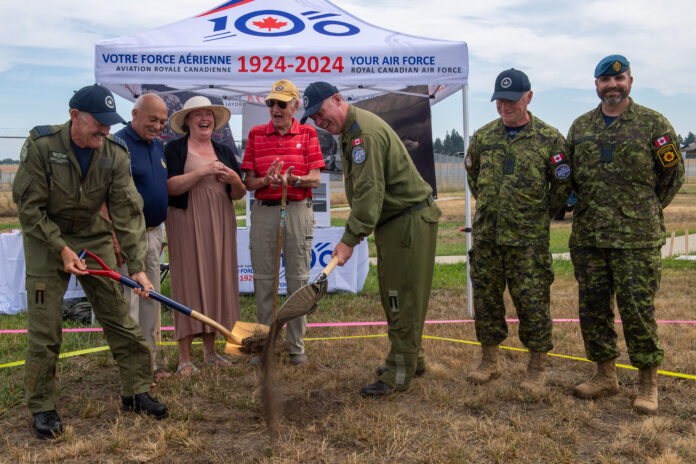A pavilion to display an artifact of Canadian aviation history is now officially under construction at the Comox Air Force Museum. The ‘Vampire Pavilion’ will showcase an early project in jet-powered fighter jets.
Project lead, Major Kevin Stevens, was on hand for the announcement. He has taken on the project in a voluntary capacity on top of his full-time job with the CAF.
In his opening remarks, Stevens broke down the significance of the plane that the pavilion will display. The DeHavilland Vampire Mark III was one of the first jet-powered fighter plane, designed and first built in the 1940s. This specific plane, Vampire 17031, flew in air shows until the turn of the millennium when it was brought to Comox and given artifact status.
Related: ‘Vampire’ aircraft pavilion to be built for RCAF centennial next year
They continue to fundraise for the project with an ultimate goal of $1 million. They are sitting at around 40 per cent of the way to that goal. Honourary Colonel Bob Quartermain says he will be dipping into his pocketbook to help incentivize others to donate.
“Today I am announcing a new fundraising challenge,” says Quartermain. “Donate $1 for every year of the RCAF – $100 for 100 years – and I will match the first 500 donations.”
The museum says that means for every hundred donated, two hundred will actually go towards the project. That means a total of $100,000, including $50,000 from Quartermain, should 500 people donate $100 each.
19 Wing Public Affairs Officer, Captain Christine MacNeil says there is excitement around the project.
“Very excited to be breaking ground,” says MacNeil. “This project has been many years in the making and with the coming of the RCAF Centennial, that was the impetus to really get things moving.”
MacNeil says that if fundraising continues successfully, they are still on track for the pavilion to be ready for the RCAF centennial in April of next year – as was their original goal. She says the project has been a product of the community as a whole.
“Private donors in the community, both large and small, are the reason we are able to break-ground today,” says MacNeil. “Local businesses have offered to donate materials (such as glass, concrete) and labor. All of the support we are receiving from the community is incredible, and demonstrates that history matters.”
Donations can be made in person at the museum or on the museum website.






